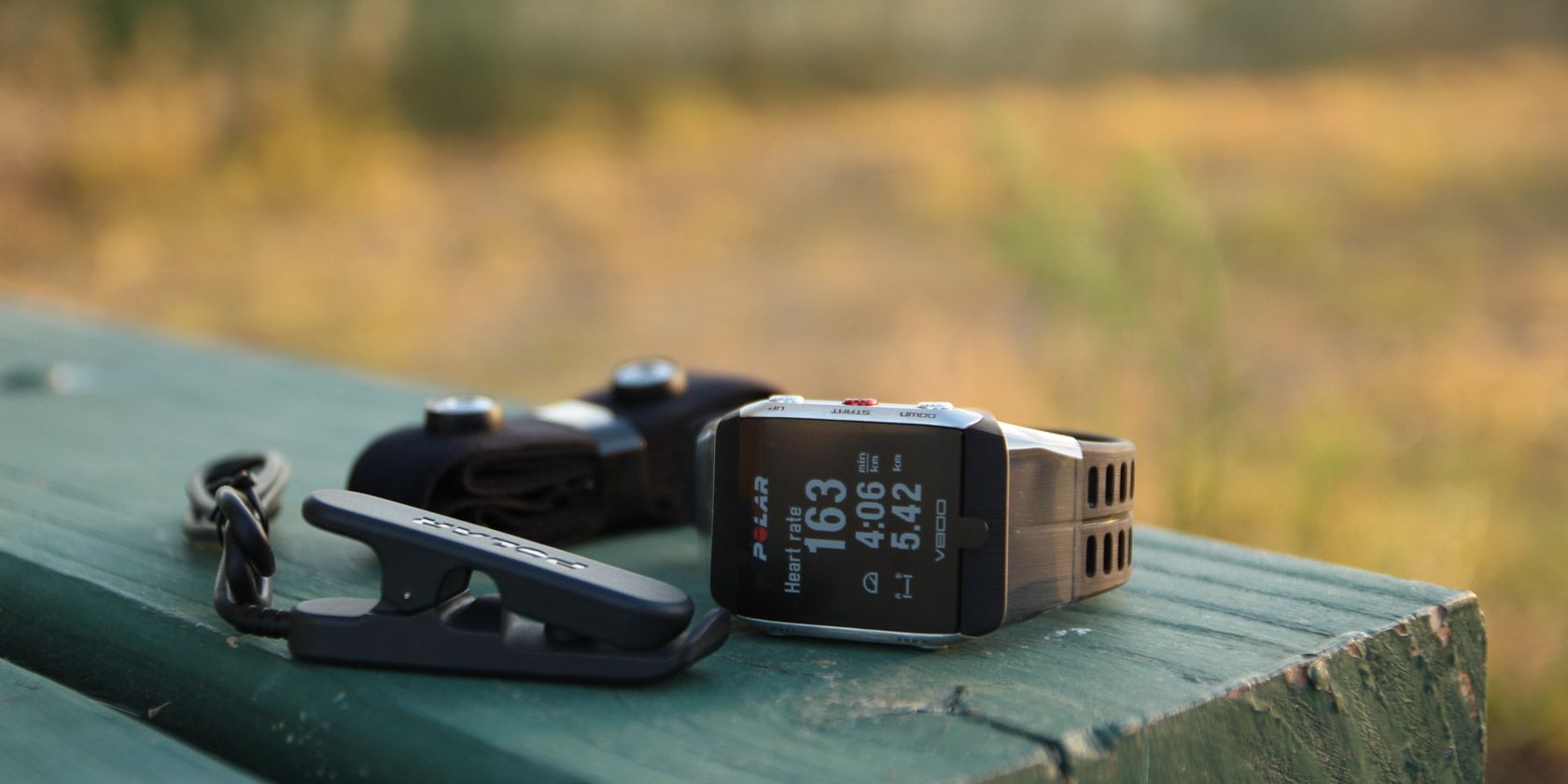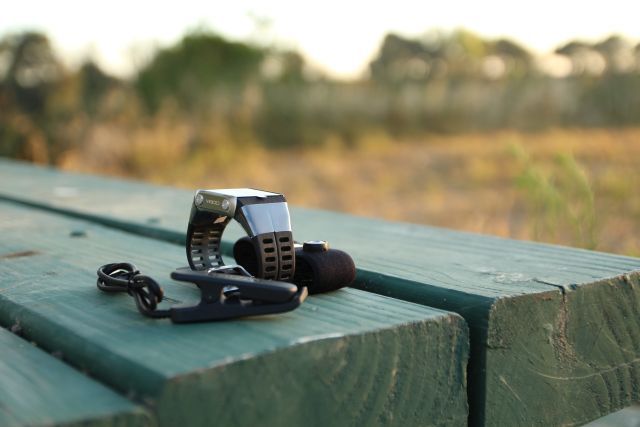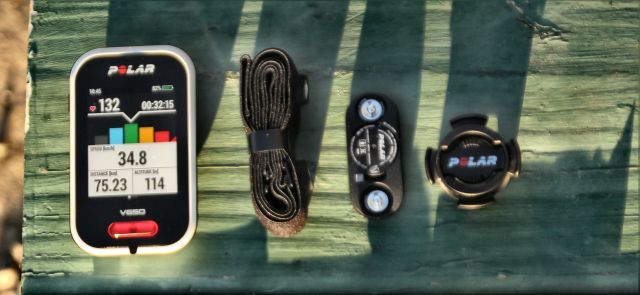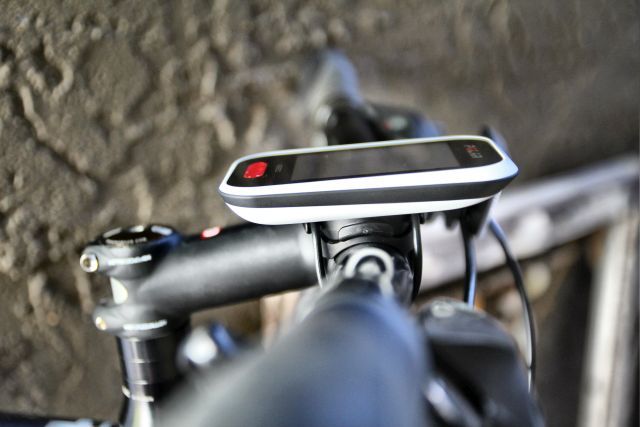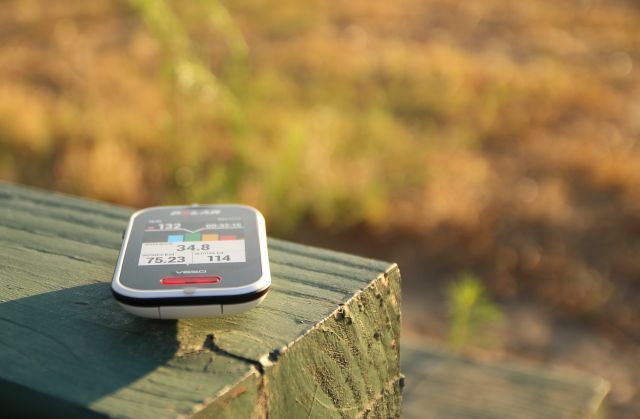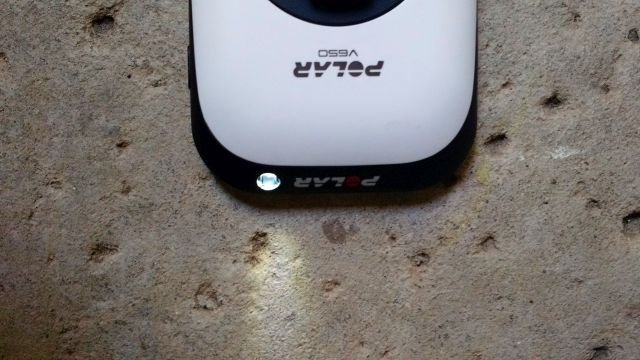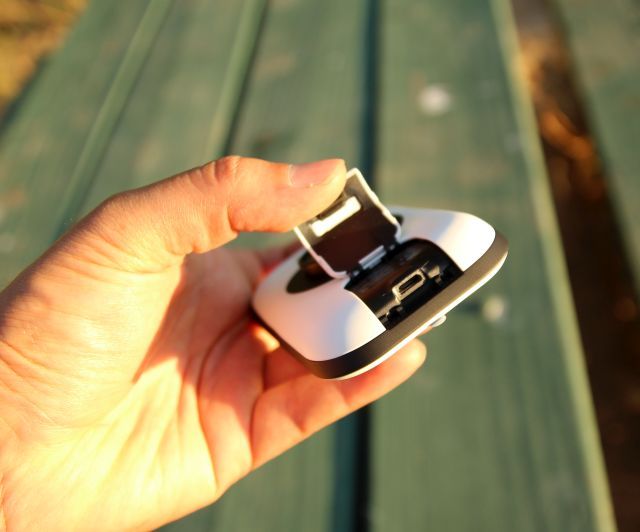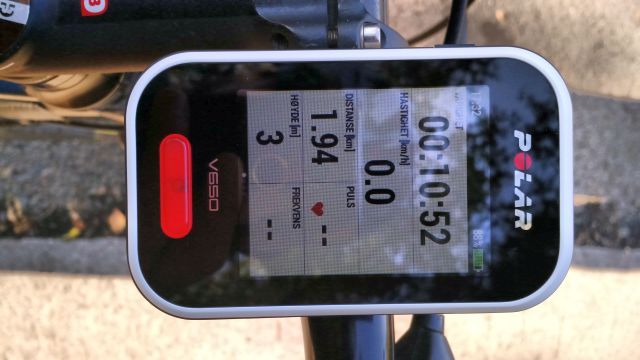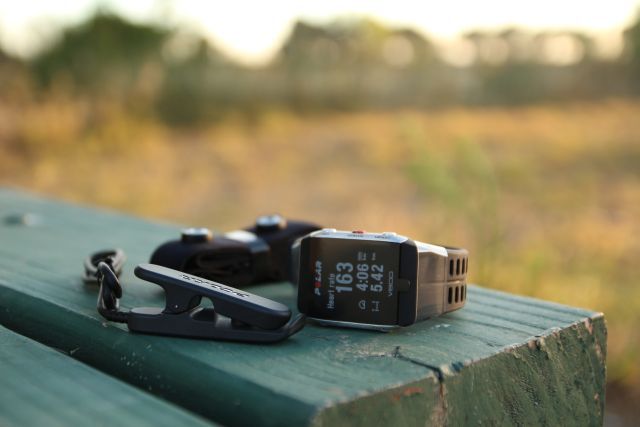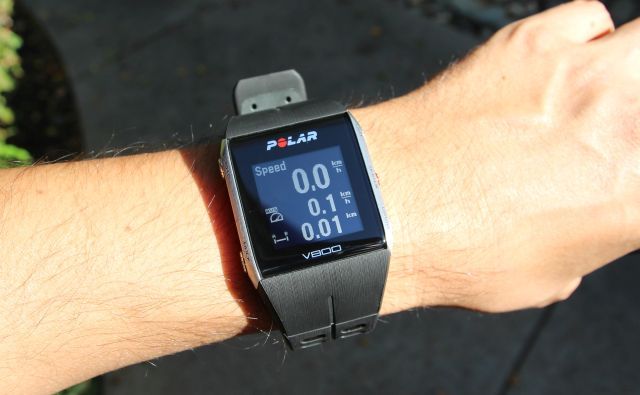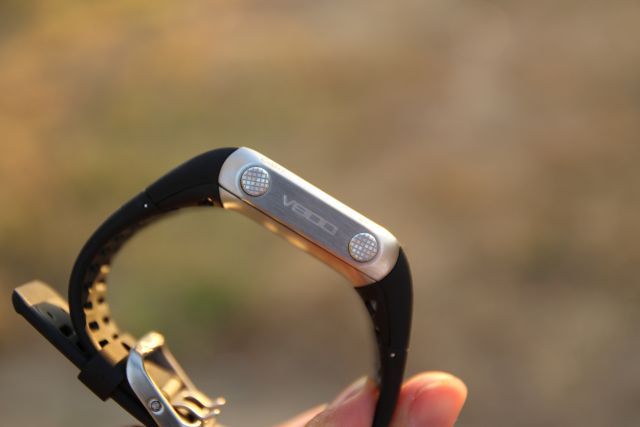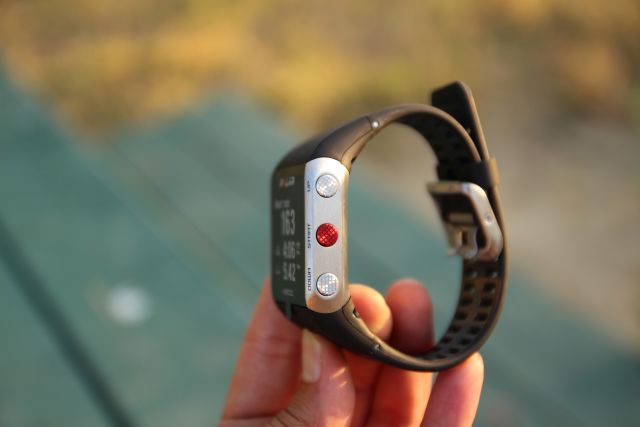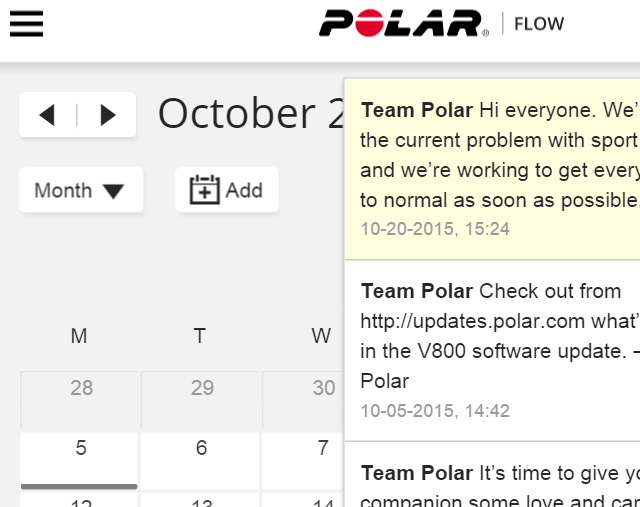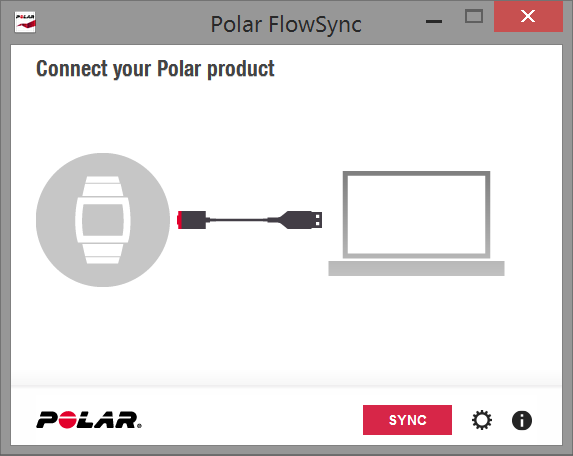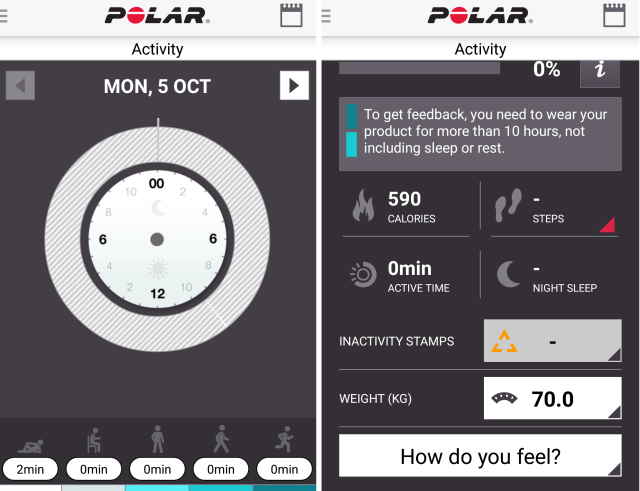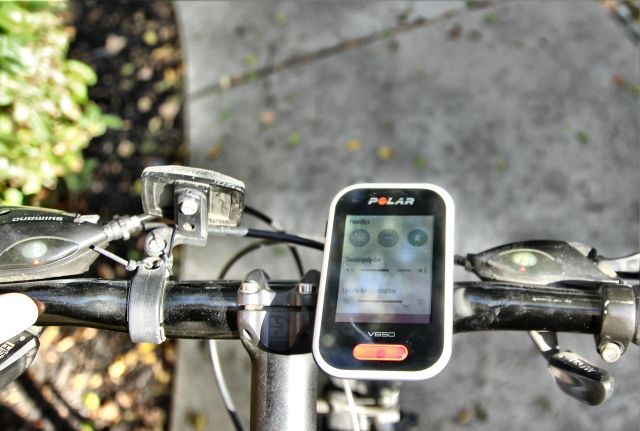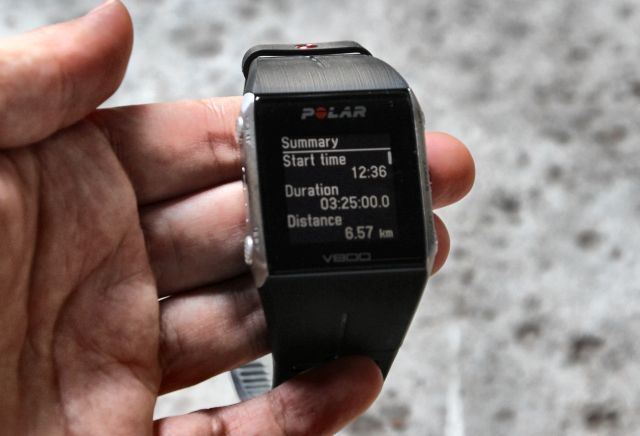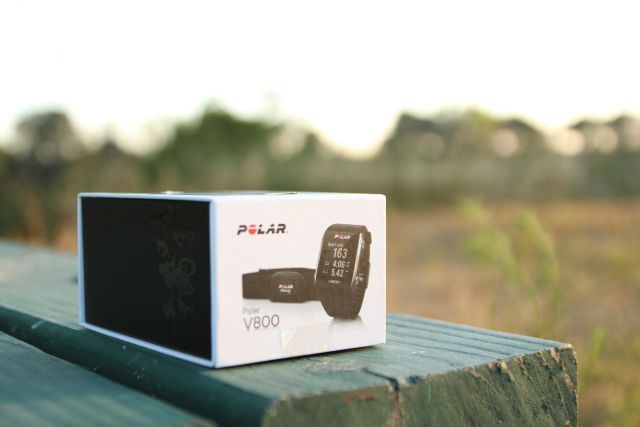Polar's two latest fitness wearables cater to hard-core fitness enthusiasts in two categories: triathletes and bicycling nuts. The most general of the two devices is the $300-400 Polar V800 smartwatch. For those interested in bicycling, there's the $250 Polar V650 bicycle computer, which brings a car-like dashboard to the handlebars to any bicycle. Both offer the high-end in fitness tracking for around $300. So should you purchase either? Read on to find out; at the end of this review, we'll be giving both away to one lucky reader!
Criteria for Evaluation
Most of today's wearables and fitness trackers loosely divide into three groups: Fitness wearables, notification devices, and now personal assistants - like Android Wear (what's Android Wear?). A few rare devices hybridize the three different groups - like the Apple Watch (our Apple Watch review). Dedicated devices tend to focus on the delivery of just one of these groups, whereas hybrid devices offer diminished accuracy at the advantage of flexibility.
The V800 falls into the fitness wearable classification, although it also includes smartphone notifications. The V650 cycling computer however is dedicated fitness tracker. A more accurate description is that it's a dedicated bicycling performance fitness tracker.
A dedicated fitness wearable needs to beat the competition in a number of key areas: sensor package, battery life, sensor accuracy, screen viewability, and build quality. It should also offer a software environment that makes the wearable easy to use, with easy to comprehend data.
Design and Aesthetics
Polar V650 Hardware and Design
The exterior design of the V650 looks similar to a smartphone. It features solid construction – a clear step above similar fitness-oriented wearables.
There's really two different wearables included with all of Polar's products: the Bluetooth Smart heart rate sensor straps around the user's chest. It uses a conductive means of reading the user's heart rate, which I believe is EKG based. The design -- which seems standard among heart rate sensor chest straps -- requires some kind of conductive wetting before it becomes visible as a pairable Bluetooth device. It's a pretty brilliant design and something that I hope comes to smartwatch design in the near future. Until the strap comes in contact with moisture it remains inactive, thus it doesn't drain power if not in use. Polar makes the point very clear that users should wipe the strap down after workouts, to remove residual conductive particles.
Otherwise using the V650 doesn't require a great deal of effort. As you might guess, the V650 doesn't attach to the user's body. It hooks onto the handlebar of your bicycle using a silicon-rubber O-ring and a hard plastic retaining bracket. The V650 doesn't directly attach to the handlebar, it instead connects to a hard plastic bracket, which uses a silicone rubber pad to cushion its union with the metal handlebar. The O-rings seem to hang a bit loose on my handles, although not so loose that the device falls off.
V650 Hardware Specifications and Peripherals
- System-on-a-chip: Unknown but probably a Cortex M
- Display: 320 x 240 daylight readable LCD screen (possibly twisted-nematic), protected by Asahi Dragonglass
- Other: LED flashlight, GPS, Bluetooth 4.0, speaker, light sensor
- Peripherals: Handle mount, H7 Smart Heart Rate Sensor, USB cable
The V650 also includes an LED light for riding at night or low-light conditions. The light sensor, located on the glass of the V650, also allows the LED to automatically activate based on ambient lighting conditions. The simplicity and elegance speak volumes about the design of the V650, although the power of the light isn't luminous enough to light the road in front of you.
Concealed beneath a plastic flap hides a micro-USB charging and data-syncing port. Polar's FlowSync software can connect to the V650 through this port -- and no other option exists. While the V650 include Bluetooth 4.0 low-energy functionality, the firmware can only update via a USB connection and the desktop application. I've used wearables that offer firmware updates over Bluetooth, but the reliability of this method makes its omission a trivial concern.
The LCD screen (which appears to be a low drain twisted-nematic, or TN, panel) offers excellent visibility in direct sunlight, although with the poor viewing angles of TN technology. I'm not entirely certain that the screen is a TN type, but I do know the V650's battery life seems unnaturally good for a larger TN panel at around 10 hours of endurance. Its excellent up-time stems from its low drain internal components. Polar went with a glossy, glass screen, which shows up in the photographs of the device. In actual use, the glare won't really detract from the screen's visibility, particularly if automatic brightness, or high brightness, is enabled.
Polar V800 Hardware and Design
The Polar V800 ranks as one of the most solidly designed wearables to ever touch my wrist. It includes articulated, metal joints. The silicone rubber wriststrap, which contacts the skin, and an LCD screen with fantastic daylight readability. The internal guts of the V800 offer similar specifications as other high-end fitness wearables.
V800 Hardware Specifications and Peripherals
- System-on-a-chip: STMicroelectronics STM32F437
- Screen: Black and white LCD screen with Gorilla Glass 3
- Peripherals: H7 Heart Rate Sensor and chest strap, proprietary USB clamp charger
- Other: Integrated speaker
Like most dedicated wearables, the V800 relies on a Cortex M4 processor, and also includes the standard biometric sensor support and ultra-low power operation. Cortex M4 processors hail from ARM Holdings, the world's largest (in raw numbers) processor maker. Among the various ARM-based processors and systems-on-a-chip out there, the STMicroelectronics module offers very low power consumption and a solid suite of sensors. The module also includes Bluetooth Smart (why Bluetooth is sexy) support, which all wearables must possess. For perspective, at maximum consumption the STM32F437 system-on-a-chip consumes around 320 micro-amps. A smartphone consumes almost 3 times more power.
The six-axis sensor package, including GPS, contained within the V800 offer users the ability to determine speed and distance with great accuracy. A six-axis sensor suite normally includes a paired cluster of a three-axis accelerometer and a three-axis gyroscope. This sensor cluster doesn't offer the same navigational features of 9-axis sensors inside of the average smartphone, but for use as a wearable it's more than adequate. The presence of a magnetometer would also serve to add a compass, which perhaps isn't within the scope of a the V800 and its tiny LCD screen.
Like its older kin from Polar, the V800 melds bare-bones functionality with rock-solid build quality. It also includes a daylight readable black-and-white LCD screen – similar to that used in the Basis Peak and Pebble (and most other old-school wearables). While minimalist, the choice in screen technology offers low drain and high daylight visibility. Polar also includes an anachronistic internal speaker, which produces a alert beep similar in pitch and treble to Casio watches from the 1980s. Overall, Polar put together tight wearables package, suitable for hardcore fitness-wearables users.
Distributed along the left and right sides of the V800 rest five metal buttons, with tactile, crosshatched texturing. On the left, Polar places Back and Light buttons. The Back button – as the name implies– moves the users onto the previous menu. It also doubles as a means of cancelling a exercise by holding it down for three seconds. Above the Back button, is a manual switch for the LCD backlight. There's not much to say about the light, other than that it offers good lighting characteristics, although it doesn't serve to reduce to the amount of glare on the glass covering the screen. It's good enough, though, for low-light conditions.
On the right-side of the watch, there's an Up, Down, and Start button. These function as the navigational tools through the V800's menus and submenus. The Start button allows users to begin a particular exercise (of which many exist). The Up and Down buttons allow users to scroll through each menu. Unlike other smartwatches, the screen doesn't include capacitance, which helps in all-weather situations – water can accidently trigger capacitive screens, causing all kinds of havoc.
The Polar H7 Smart Heart Rate Sensor (which users can purchase separately) pairs with either device. With the addition of the Polar Beat app, which is available on both Android and iOS, users can pair the sensor with most mobile devices. Optionally, and not shown in this review, Polar also includes a variety of other wearable Bluetooth connected sensors, which include a cycle sensor, a foot sensor – and more.
V650 and V800 Software
Polar offers two syncing solutions for its wearables: The optional Polar Flow mobile application and the mandatory Polar FlowSync for Windows or Macintosh. And then there's the Polar Flow web-interface.
The web interface allows users to read their data, and receive updates from Polar, without installing any application. It also displays biometric data over a monthly period, which aids users seeking to improve workout performance.
Polar FlowSync plays two roles. First, it syncs data between Polar's servers and its wearables. Second, it updates the wearable's internal firmware. Like most of the better wearables on today's market, internally updateable firmware allows manufacturers to eliminate bugs and improve performance, even years after the product's release. This oftent translates into better user value, as the device will remain current for at least the warranty period -- and more than likely two years past the release date of the device.
The FlowSync mobile app lets users track their workouts, similar to the webapp. However, once paired with the V800, it can also push notifications to the watch. It's overall a decent app (although it has 3-stars in the Play Store), comparable to similar fitness apps out there.
However, the software offers a mixed bag: there's a tad too many things going on at once, which means there's a learning curve. Users will need to familiarize themselves with at least the web interface and the the desktop client, before they can start optimizing their workouts.
Using the V650 Cycling Computer
The configuration process doesn't require much effort. Users simply configure the device, strap it onto their bicycle, and then press the red action button to get started. Pausing rides just requires tapping the red button. It works for all manner of cycling activities, including indoor track, mountain biking, and road bicycling. It can also download maps and function as a navigational tool. On the downside, turn-by-turn navigation doesn't seem to be available, although the V650 employs the amazing Open Street Maps (OSM is one of the 3 best GPS maps suites) maps repository.
I couldn't find a great deal of information on the sensor suite inside of the V650, but its ability to display a functional compass suggests it includes a magnetometer. My only criticism is that the V650 offers all the components of a turn-by-turn navigational tool, without including turn-by-turn capabilities. Unless I'm missing something obvious, this is a really unfortunate design choice.
Using the V800 Fitness Tracker
The V800 includes two components: a heart rate chest strap and the smartwatch itself. The heart-rate strap offers extraordinary accuracy, at the cost of added complexity. Unlike the hordes of Android Wear devices out there, the heart-rate strap does not estimate users' heart rates, which leads to inaccurate measurements. It relies on a method known as electrocardiography (EKG), which determines heart rate based on electrical changes, which the device reads at the skin level. EKG provides demonstrably higher accuracy than any other method used in consumer-grade wearable heart rate sensors. On the downside, it requires pre-wetting before the device will turn on.
Wetting the heart rate strap requires a small amount of moisture. While many medical devices apply a conductive gel, EKG fitness wearables do not require a special gel as they will oftentimes acquire the needed moisture from the user's perspiration. Because the strap switches on when in proximity to perspiration (it's like a broken circuit, with the moisture serving to complete the circuit), failing to wipe it down after a workout will result in a drained battery. If the circuit remains connected, it will continue to read until drained.
Getting started with the V800 requires manually inputting the start and end of any exercise. And the kinds of exercise reach epic proportions. These include the generic workouts, like cycling, running, and swimming. In addition, though, the V800 can track the user's ascent and decent and GPS coordinates, which makes it fantastic for hiking, mountain climbing, or any kind of exercise involving vertical, outdoor movement. It can also customize the particulars of each exercise, although I found that the presets more than adequate. Users can store their favorite workouts in a Favorites folder, which allows quick access to their most used exercise routines.
An additional layer of preparation is required, though, before the V800 can accurately measure a wearer's exercise data. The user must enter (through the web interface) which arm the watch attaches to and the individual numbers for each exercise. For example, when swimming, the user needs to input the length of the swimming pool.
Should You Buy a Polar V650 or V800?
It depends on whether or not you need a dedicated fitness wearable. However, there's a lot of devices in the same market segment as the V800 and the V650, so you'll want to look closely at the V800 and V650 to see if they meet your needs.
The V800 – like other multisport fitness trackers – offers users the ability to receive accurate heart-rate measurements, along with notifications from their smartphone. It doesn't include any kind of automatic engagement of its fitness tracking. Users need to first strap on the EKG sensor and then manually control their exercise routine. For users who prefer a set-and-forget wearable, like the Basis B1 (our Basis B1 review), the V800 isn't for you. Those who prefer manually inputting the beginning and ending of exercise, then the V800 offers a better constructed wearable, with a solid software infrastructure, than many of the alternatives.
The V800, without question, ranks as one of the best built, and most rugged, wearables around – but it requires a lot of user interaction to properly utilize. As such, it's most appropriate for triathletes, or other multisport enthusiasts. It's not for weekend warriors or anyone looking for sleep tracking.
The V650, unfortunately, targets a narrower group than those who might want the V800. In general, cycling computers don't really do anything in terms of health tracking that your smartphone can't. The advantages it possesses over a smartphone include three categories: weather protection, outdoor viewing quality, and better battery life. If those three features appeal to you, then Polar's V650 might just satisfy your needs.
[recommend]The Polar V650 and V800 offer good value and high build quality. If you want an alternative to a bicycle-mounted smartphone, the V650 offers an excellent option. Amongst its peers, it includes the best – and largest – screen, although a similarly high price tag. The V800 offers better construction than its peers, but also at a high price.[/recommend]
Polar V650 and V800 Fitness Wearables Set (worth $600!)
Send your products to be reviewed. Contact James Bruce for further details.

